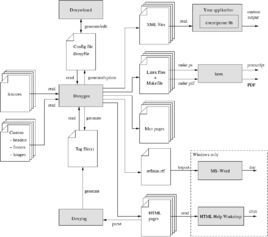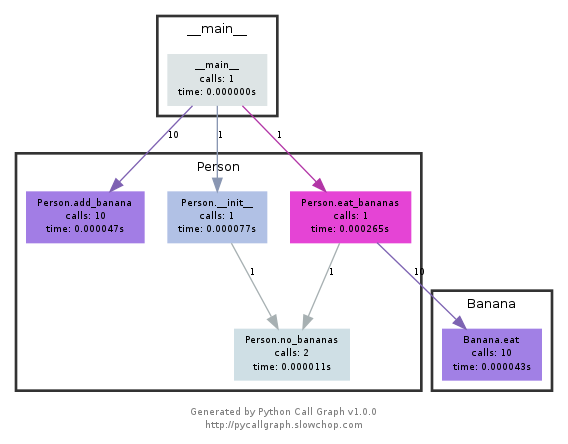
If you start using doxygen for an existing project (thus without any documentation that doxygen is aware of), you can still get an idea of what the structure is and how the documented result would look like. Please note that the above list might contain more items than that by default set in the FILE_PATTERNS.Īny extension that is not parsed can be set by adding it to FILE_PATTERNS and when the appropriate EXTENSION_MAPPING is set.
#DOXYGEN PYTHON HOW TO#
To omit all test directories from a source tree for instance, one could use: EXCLUDE_PATTERNS = */test/*ĭoxygen looks at the file's extension to determine how to parse a file, using the following table: Extension To further fine-tune the list of files that is parsed the EXCLUDE and EXCLUDE_PATTERNS tags can be used.

For recursive parsing of a source tree you must set the RECURSIVE tag to YES. Only files that match one of the patterns will be parsed (if the patterns are omitted a list of typical patterns is used for the types of files doxygen supports). If you have a larger project consisting of a source directory or tree you should assign the root directory or directories to the INPUT tag, and add one or more file patterns to the FILE_PATTERNS tag (for instance *.cpp *.h). If you do not wish to edit the configuration file with a text editor, you should have a look at doxywizard, which is a GUI front-end that can create, read and write doxygen configuration files, and allows setting configuration options by entering them via dialogs.įor a small project consisting of a few C and/or C++ source and header files, you can leave INPUT tag empty and doxygen will search for sources in the current directory. See section Configuration for more details about the configuration file. You can probably leave the values of most tags in a generated template configuration file to their default value. It consists of a number of assignments (tags) of the form: The configuration file has a format that is similar to that of a (simple) Makefile. the minus sign) as the file name then doxygen will try to read the configuration file from standard input ( stdin), which can be useful for scripting. bak before generating the configuration template. If a file with the name already exists, doxygen will rename it to. If you omit the file name, a file named Doxyfile will be created. Where is the name of the configuration file.

To do this call doxygen from the command line with the -g option: doxygen -g To simplify the creation of a configuration file, doxygen can create a template configuration file for you. A project can consist of a single source file, but can also be an entire source tree that is recursively scanned. Each project should get its own configuration file. Also, completely different languages can be supported by using preprocessor programs: see the Helpers page for details.ĭoxygen uses a configuration file to determine all of its settings.

It is possible to configure certain file type extensions to use certain parsers: see the Configuration/ExtensionMappings for details. Doxygen also supports the hardware description language VHDL by default. These programming languages are supported by default: C, C++, Lex, C#, Objective-C, IDL, Java, PHP, Python, Fortran and D. What do I need to change in the config file or some xml scheme, in order to have classes and functions under package documentation.Step 0: Check if doxygen supports your programming/hardware description languageįirst, assure that your programming/hardware description language has a reasonable chance of being recognized by doxygen. If I click on the package name, then only the package description is shown, but not the classes and functions. If I take the same example script from doxygen documentation, create config file with "doxygen -g config" and generate html with "doxygen config", then the output is different. In the corresponding HTML documentation that is generated by doxygen (example output in the web), if one clicks on a package name, then all the descriptions, classes and functions connected with the package are shown.

"Special documentation blocks in Python" in gives an example of doxygen usage with Python.


 0 kommentar(er)
0 kommentar(er)
